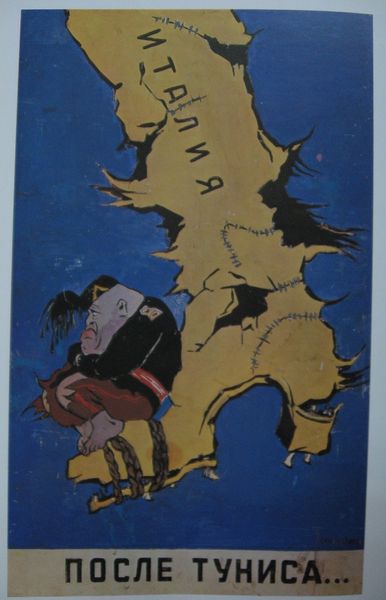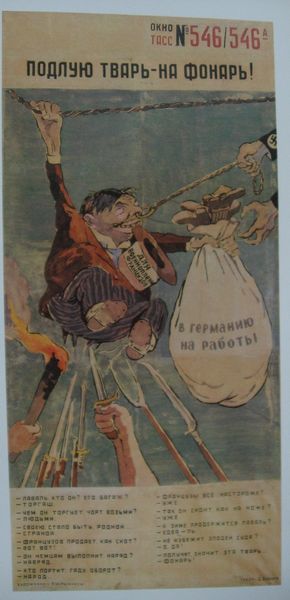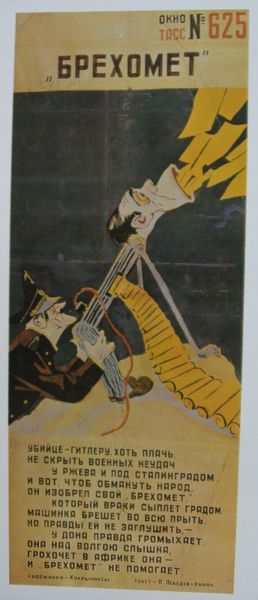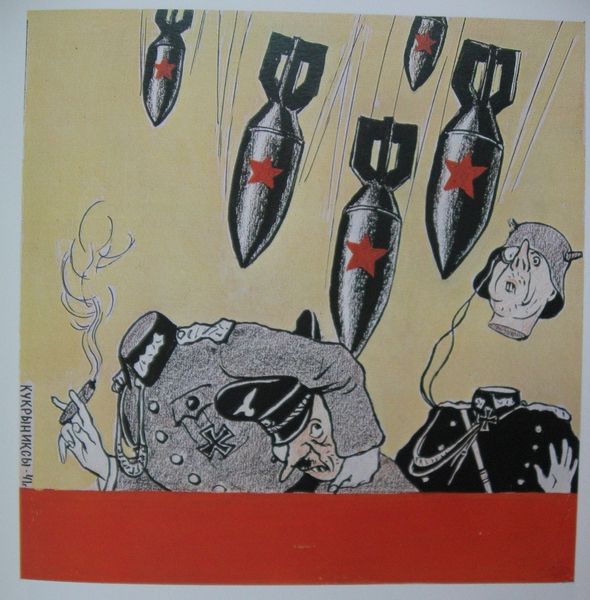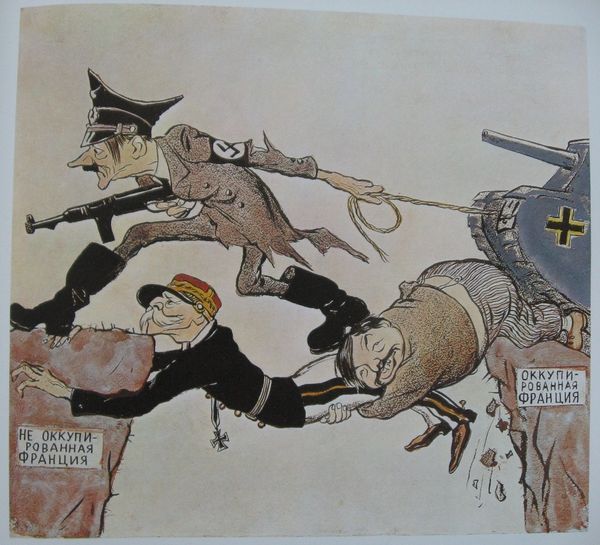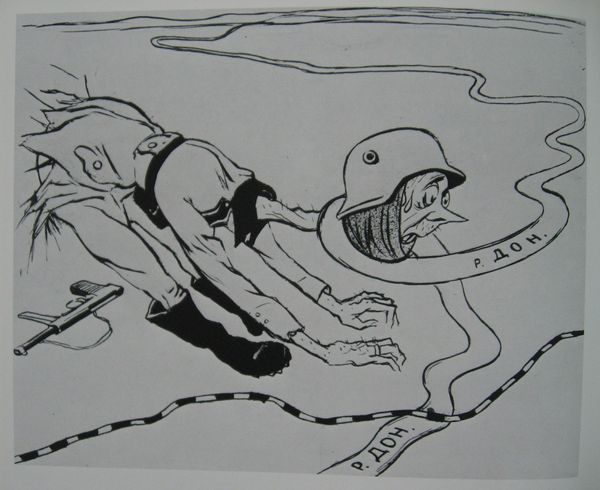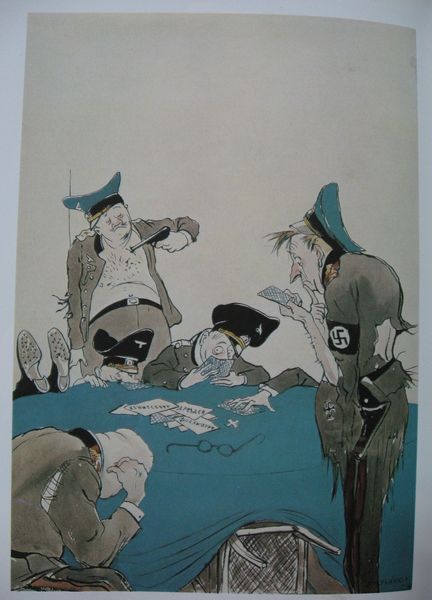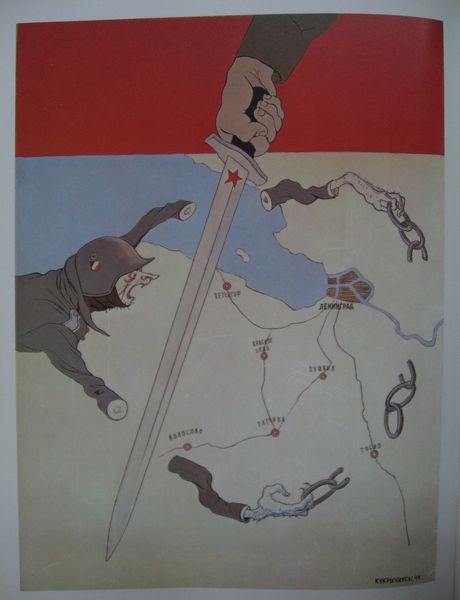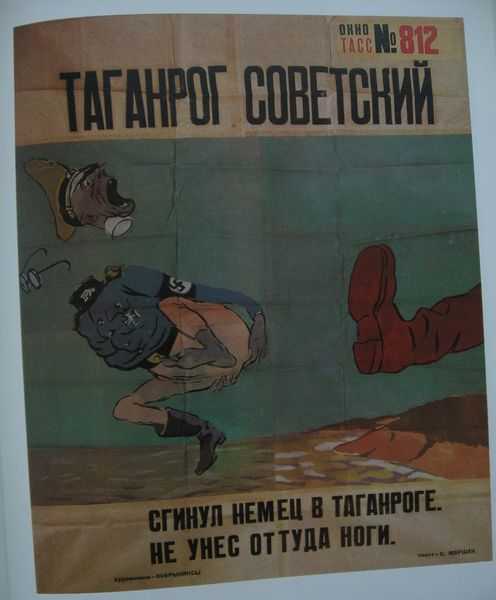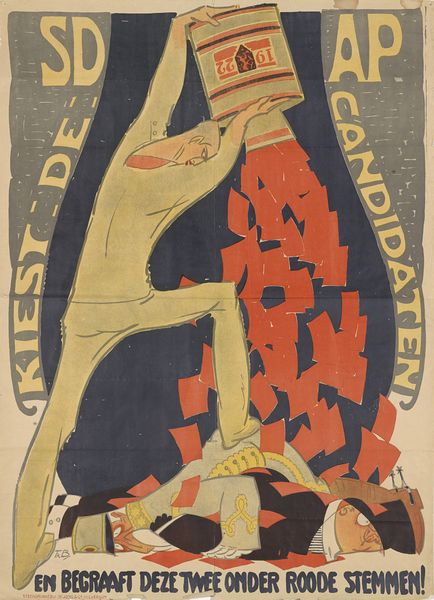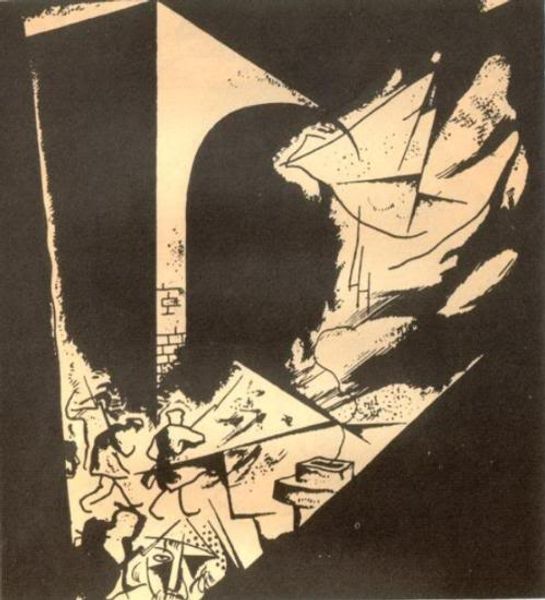
graphic-art, mixed-media, painting, pen, poster
#
graphic-art
#
mixed-media
#
water colours
#
painting
#
caricature
#
war
#
soviet-nonconformist-art
#
figuration
#
social-realism
#
text
#
oil painting
#
famous-people
#
coloured pencil
#
pen
#
history-painting
#
poster
Copyright: Kukryniksy,Fair Use
Curator: Kukryniksy, a collective of Soviet artists, created this poster, titled "A Deadly Care," in 1944. It's a mixed-media piece, using graphic art techniques, watercolour and ink. Editor: The imagery is striking. A grotesque snake towers over a diminutive figure of Hitler. The whole piece feels saturated with impending doom, as if he knows he is cornered. Curator: The use of readily available and relatively inexpensive materials was central to its function as propaganda. The piece was meant for mass distribution in a time of conflict. Think about the labor and resource management it takes to produce and distribute an image like this across a war-torn country. Editor: Absolutely. The snake’s form is created out of a geographical area, swallowing up sections of countries allied with Hitler – we see "Rumania" and "Hungary" marked, hinting at the constriction of Nazi power. The serpent head, with the facial features of death is a really potent and familiar image in many cultural visual languages. Curator: Note how the artists don't try to mimic German artistic techniques or aesthetic. It remains distinctly Soviet. What impact do you think that might have had at the time? Editor: It asserts a strong visual identity. This work speaks of Soviet resilience and the inevitable crushing of fascism. You can almost hear echoes of ancient Slavic folklore in the snakelike personification of the enemy. The very posture of the characters expresses an unavoidable end. Curator: The original was reproduced quickly and cheaply. One can see that in the poster's execution, prioritizing message over refined aesthetics, and in that sense challenges elitist concepts about ‘fine art’ that might have previously been considered high art, rather than something produced on a massive scale for propaganda. Editor: For me, the power of the poster is in how Kukryniksy appropriates and subverts such primal imagery. It's not just about immediate political messaging, but also tapping into deeply rooted fears and anxieties about foreign invasion. Curator: Examining how those propaganda materials were actually produced and distributed gives a richer understanding of how they influenced public opinion during that critical moment. Editor: Indeed, and in how deeply rooted the images they appropriated were embedded in our shared psyches. The dialogue continues beyond its original intention and setting.
Comments
No comments
Be the first to comment and join the conversation on the ultimate creative platform.

